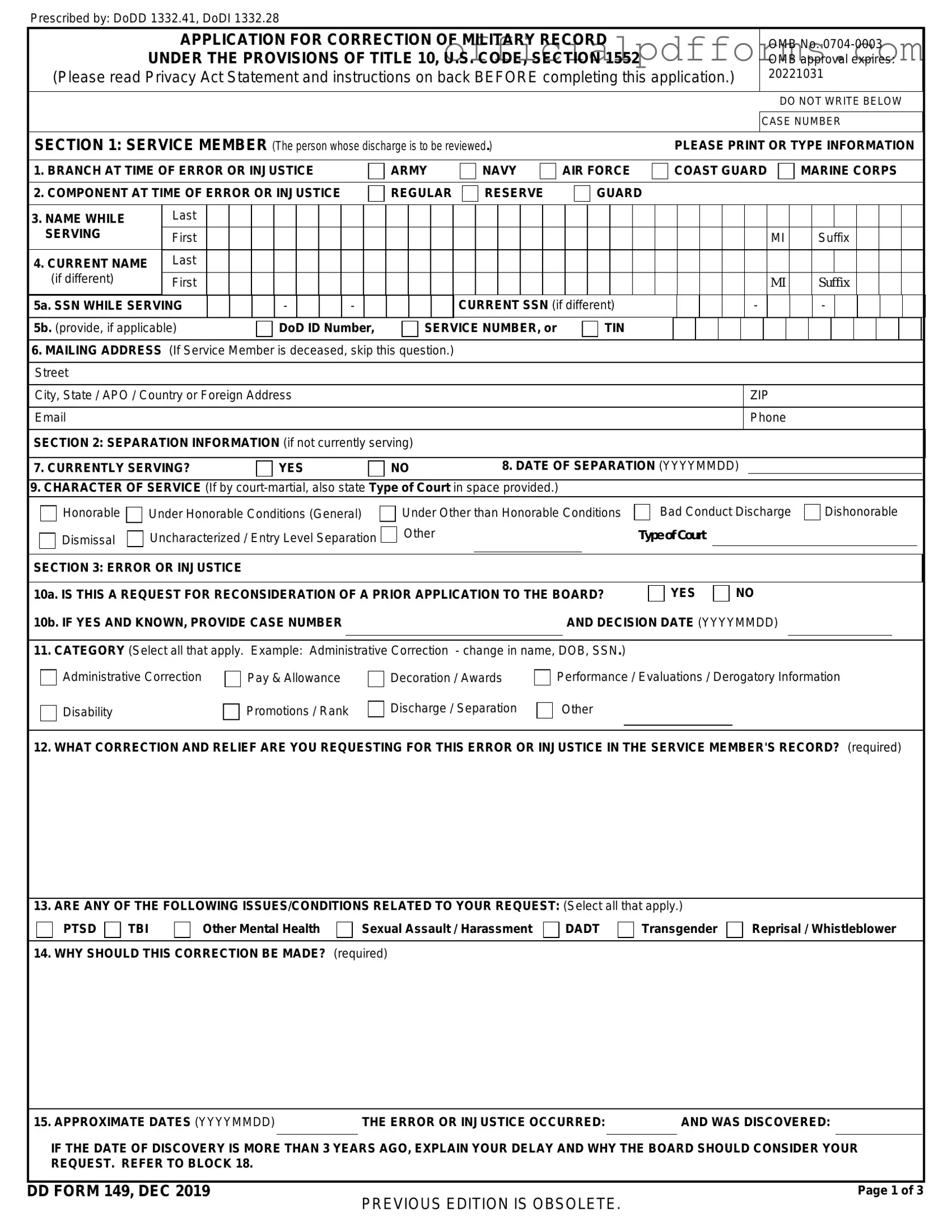The DD 149 form is a document used by veterans to apply for a correction to their military records. This form is specifically for those seeking to change or amend information that may be incorrect or incomplete in their official records. It is essential for ensuring that your military service is accurately reflected, which can impact benefits and other entitlements.
Any individual who has served in the U.S. military and believes there is an error or omission in their service records can use the DD 149 form. This includes active duty members, reservists, and veterans. Family members may also submit the form on behalf of the service member in certain circumstances.
The DD 149 form can be used to request various types of corrections, including but not limited to:
-
Incorrect dates of service
-
Errors in rank or grade
-
Changes to discharge status
-
Corrections to awards or decorations
-
Updates to personal information such as name or Social Security number
Filling out the DD 149 form requires careful attention to detail. Start by providing your personal information, including your name, Social Security number, and service details. Next, clearly explain the correction you are requesting. Be specific about what information needs to be changed and why. Supporting documents should be attached to strengthen your case. Ensure all sections are completed accurately before submitting.
The completed DD 149 form should be submitted to the appropriate board for correction of military records. This is typically the Board for Correction of Military Records (BCMR) for your branch of service. Each branch has its own submission guidelines, so check their official website for specific instructions, including mailing addresses and electronic submission options.
Generally, there is no fee for submitting the DD 149 form. This process is designed to help veterans and service members correct their records without financial burden. However, if you require legal assistance or representation during the process, there may be costs associated with those services.
The processing time for a DD 149 form can vary significantly depending on the complexity of the case and the volume of applications being processed. On average, it may take several months to receive a decision. It is advisable to be patient and follow up if you have not received a response within a reasonable timeframe.
Can I appeal a decision made on my DD 149 application?
Yes, if your request for correction is denied, you have the right to appeal the decision. The appeal process will involve submitting a new request along with any additional evidence or arguments that support your case. Be sure to adhere to any deadlines and guidelines provided in the denial letter.
If you find yourself needing assistance with the DD 149 form, consider reaching out to organizations that specialize in veteran services. Many nonprofit groups, legal aid organizations, and veteran service officers can provide guidance and support throughout the process. They can help ensure that your application is complete and that you understand your rights.
Yes, several common mistakes can delay the processing of your DD 149 form:
-
Incomplete or missing information
-
Failure to provide supporting documents
-
Not following the specific submission guidelines for your branch
-
Neglecting to sign and date the form
By being thorough and attentive to detail, you can help ensure that your application is processed smoothly.
